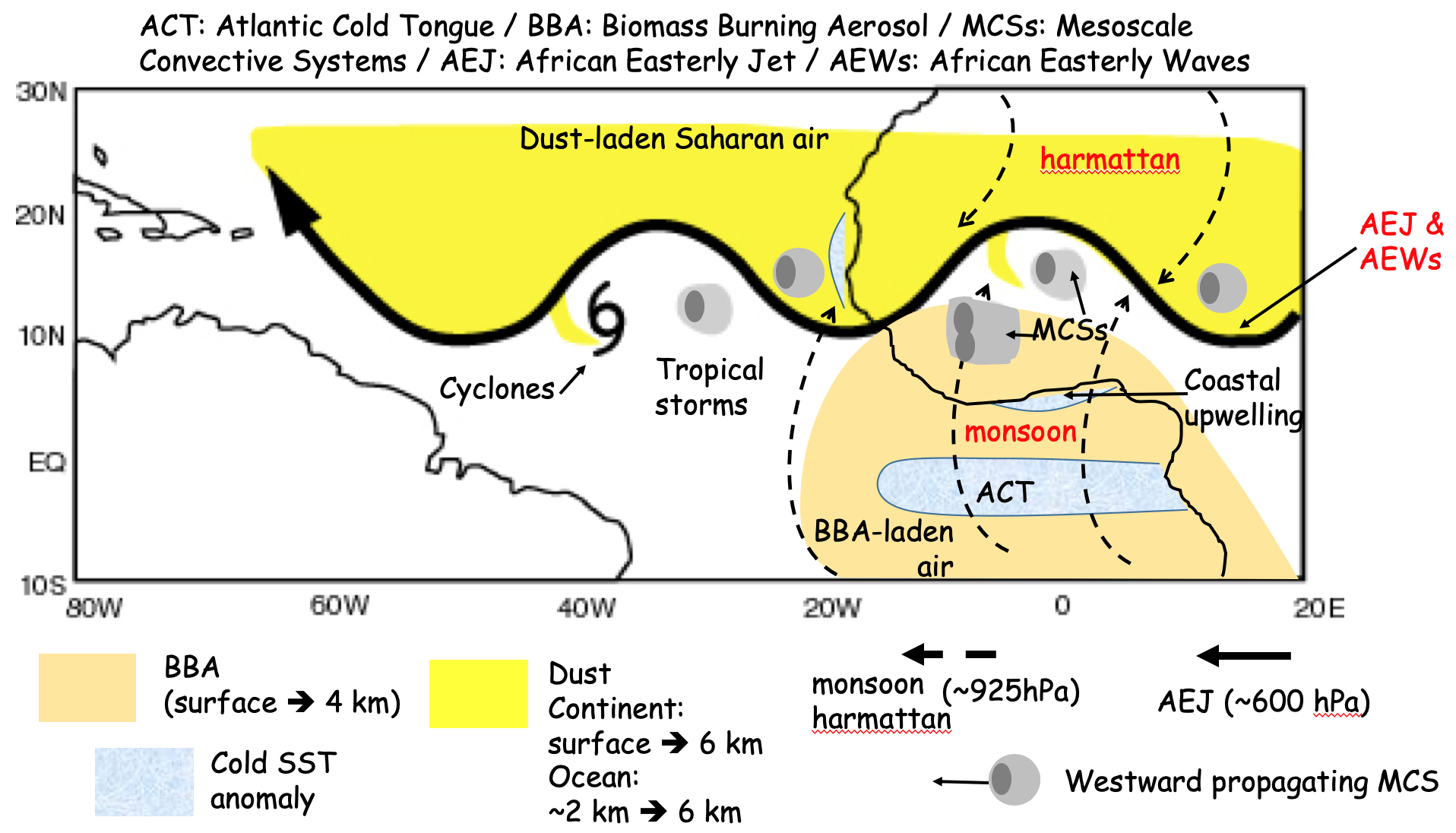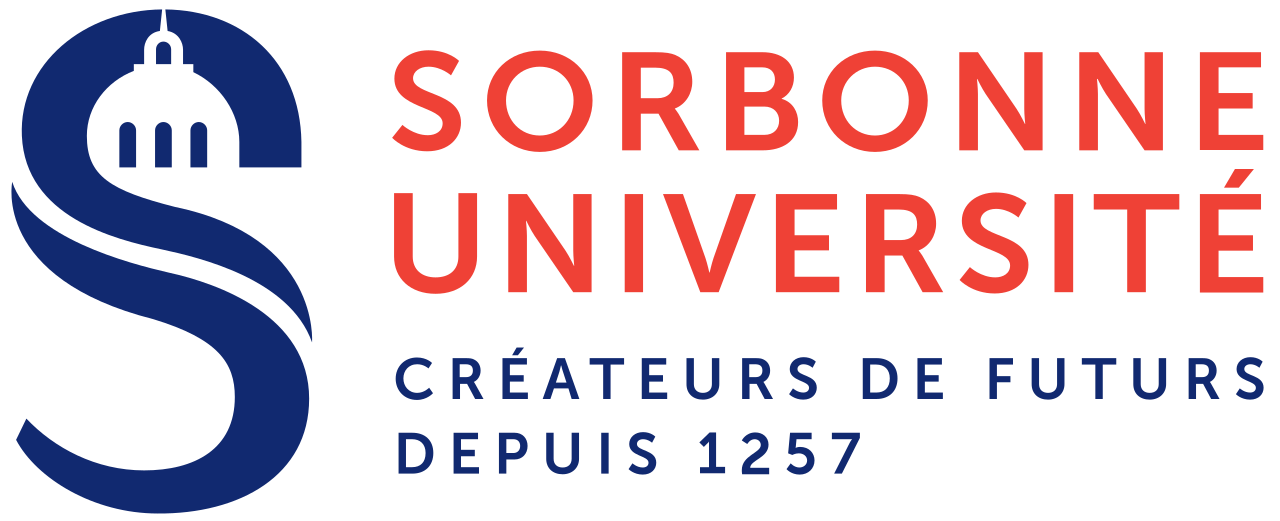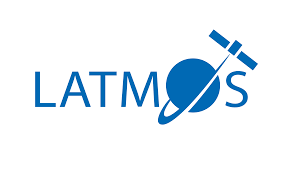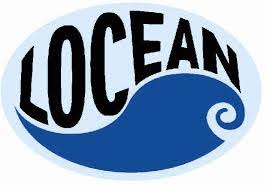SWAG:
Sea-Wind-Aerosols interaction Generating
disturbances and extreme events
The SWAG project aims at a better understanding of the impact of the surface-atmosphere coupling
on atmospheric disturbances and their consequences, including extreme events, in the tropical
Atlantic. We are particularly interested in the role of the coupling in West Africa and the
surrounding Eastern Atlantic Tropical Ocean regions, which are key regions of the global
climate, in particular concerning tropical cyclogenesis.
It is a part of the world where the meteorological weather forecasts and the predictions of
climate models are the most uncertain. The existence of large discrepancies in the
representation of the West African Monsoon (WAM) system in these models is still an open
issue, owing to the complexity of the land-sea-atmosphere interactions. Moreover, tropical
disturbances travelling westward across West Africa in the late summer contribute significantly
to the Atlantic hurricane season. Hence, the region of interest is also a key region for tropical
cyclogenesis affecting both the USA and the Caribbean (e.g. Hurricane Irma, 2017).

The SWAG project concerns the interface between meteorology, oceanography, chemistry and
physical and mathematical modeling. It is based on the implementation of a coupled mesoscale
modeling tool including the oceanic model NEMO and the atmospheric model WRF-Chem, as
well as the analysis of satellite observations, data from field campaigns and idealized
simulations. The project involves three complementary aspects, with increasing degrees of
complexity in terms of land-sea-atmosphere-aerosol coupling.
The SWAG project investigates the impact of ocean-atmosphere coupling on atmospheric
disturbances within the WAM system. These disturbances are related to the mesoscale cyclonic
vortices in the lee of large organized Mesoscale Convective Systems (MCSs), which can yield tropical
cyclones, and are modulated by the moist monsoonal inflow at low-levels, the African Easterly
Jet (AEJ) and the so-called African Easterly Waves (AEWs).
An other key issue is the impact of Saharan dust on the dynamical components of the
WAM, and in turn, on tropical cyclogenesis.
Our last objective is to investigate the impact of the atmospheric and oceanic environment on the
transition of mesoscale cyclonic vortices to tropical storms and cyclones, and on the
intensification of the resulting tropical cyclones. The intensification of tropical cyclones
indeed remains one of the most challenging issues in their prediction. The competition between
processes pertaining to atmospheric dynamics and composition as well as air-sea interactions
will be explored to segregate conditions favorable from those detrimental to the intensification
of tropical disturbances. The impact of Saharan dust and upwelling systems (in the Gulf of
Guinea and offshore Senegal) on the storm-to-cyclone transition will be thoroughly analyzed,
together with the feedback mechanisms between dust aerosols, surface winds and air-sea
interactions over the tropical Atlantic.







